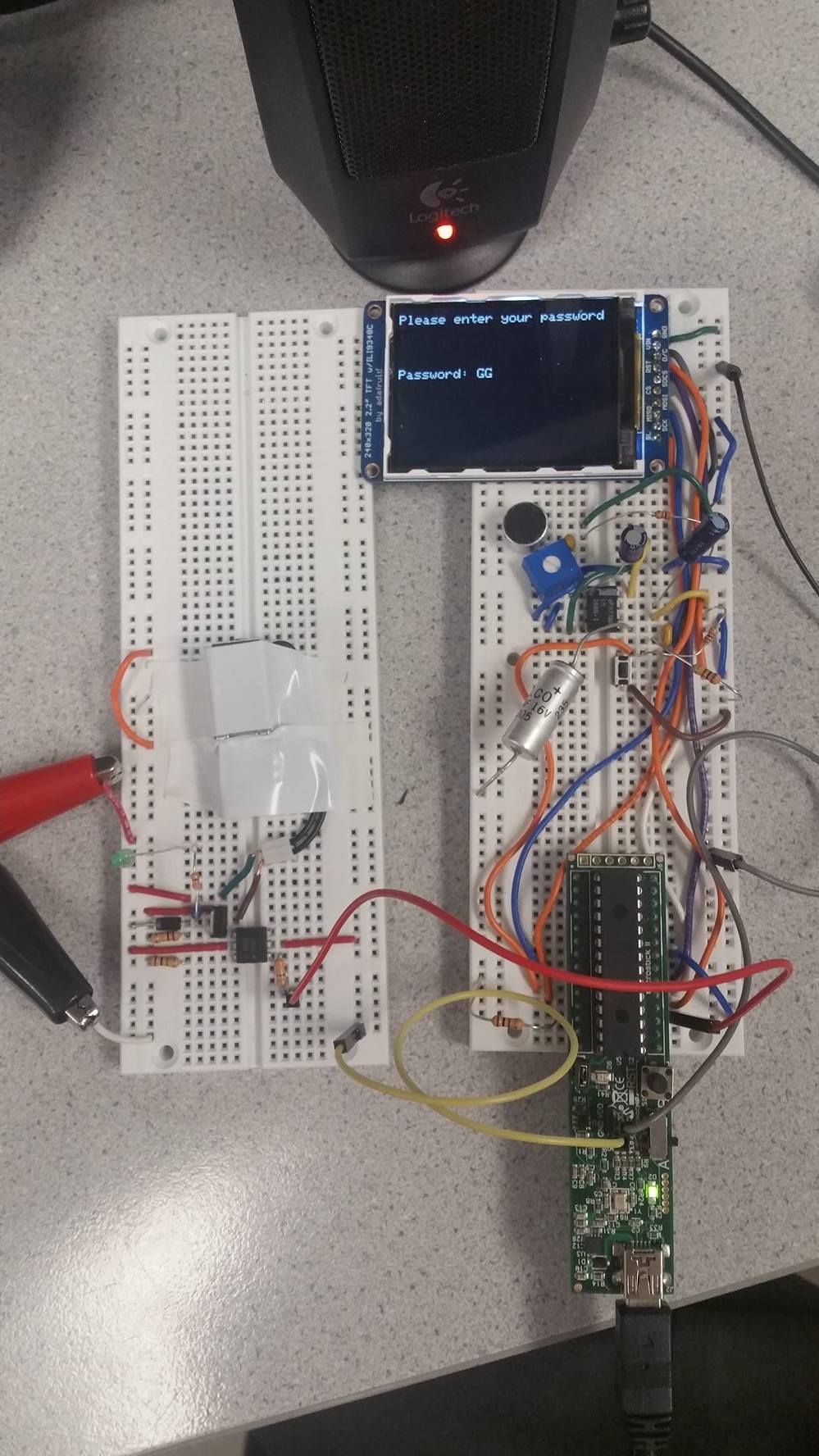Model of the Buzzer System
In order to test our project, we needed to develop a mock buzzer system to generate the morse code sounds. To achieve this we used matlab on our laptop to generate sounds over speakers. To allow entry of a morse code password we used matlab callback functions to start and stop the playing of the sound. The matlab test setup was capable of both playing pure sinusoids generated in matlab as well as any arbitrary wav file.
Filter Performance
Our current filter coefficients and thresholds are set up so that a 420 Hz signal played over speakers at a moderate volume a few inches away from the speaker reliably activates. However, there are some false positives from speech. As long as the person speaking is more than about a foot from the microphone the filter will not activate. While this amount of false positive is not ideal, the system is still able to be used. We also tested the system with a recording of the actual apartment buzzer. The sound was detected by our system, but it needed to be slightly louder than the pure 420 Hz tone.
In deployment in an actual system, the performance should actually be significantly better. Because the buzzer in apartments is designed to be heard throughout, they tend to be quite loud. This, combined with the fact that the mechanical design can be such that the microphone is very near the speaker, will mean that the relative amplitude of buzzer noise to outside environment noise will be much more favorable in a real application. This allows the threshold in a real application could be increased and the number of false positives to drastically decrease. In order to minimize the disturbance to other students and TAs using the lab too much, the volume was kept low for testing.
Morse Code Recognition Performance
Currently it is much more reliable to enter a morse code sequence through the pushbutton than through the matlab sound generation method. This is reasonable to expect since there are many more stages in the sound entry method for delays and inaccuracies to accumulate. The current matlab method of generating sounds is inadequate due to the latency from keypress to the sound playing. This time nears .5 seconds in many cases. It is hypothesized that this is the major barrier to a more reliable entry through sound. In order test this, a separate, lower latency, buzzer system must be developed.
User Experience
Due to morse codes relatively non-mainstream form of communication, not many people know how to use it. Each of us took some time to get used to the timing aspects of morse code. We all now know the morse code encodings of "SOS", "BRUCE", and a few other small words, and can utilize our device effectively. The average user of the device, is only expected to know how to do up to 5 different characters for their passcode, which given our experience working with the device, is easy enough to pick up in a few days.

Figure 1: The device turned on with passcode "GG" set